Security camera classification
The classification of security cameras is a very basic work, but it has not started. The main reason is that there are too many classification standards. If the standards are set too trivially and the classification is too fine, many cameras will appear in different classifications at the same time, which is not conducive to the overall Grasp the entire security camera system. But in any case, this most basic work has to start. Based on my own work experience, combined with the classification standards of leading companies in the industry such as Hikvision, Dahua, Univision, Axis, etc., the classification is as follows:
Video output signal
For a security camera, the light passes through the lens and shines on the internal image sensor of the camera. At this time, it is still an analog signal, which is converted into a digital signal by A/D, processed by the ISP or DSP, and then outputs the video signal.
Before output, if D/A conversion is performed again, that is, the digital signal is converted into analog signal output. This kind of camera is generally called an analog camera, and the common cvbs analog SD camera (which has basically been eliminated), XVI/TVI/CVI/ High-definition analog cameras such as AHD.
If the direct output is a digital signal, it is called a digital camera. For example, an SDI camera is a type of digital camera, which is often used in video conferences. According to the transmission rate, SDI can be divided into SD-SDI, HD-SDI and 3G-SDI. Generally, the SDI camera used for security is HD-SDI or 3G-SDI.
In the third case, in order to reduce the amount of data transmitted, the digital signal is encoded and compressed according to a certain method standard (such as H.264, H.265, H.266) and then output. This kind of camera is a network camera.
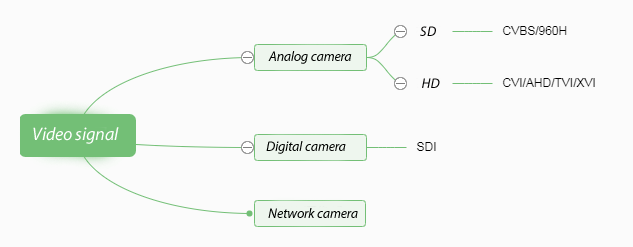
Outer casing
According to the camera shell, it can be divided into box camera, tube camera, hemisphere, ball type, pan/tilt, etc.
The so-called box camera is also called a box camera. It looks like a box and can be equipped with a C/CS interface lens without additional fill light. The various interfaces of the camera are generally at the rear. If installed in an outdoor environment, this camera needs to be equipped with a protective cover.
Bullet camera, generally refers to an infrared gun camera, lens, infrared or white light fill light, the camera itself is combined, the appearance can reach the protection level of IP66, IP67, the various interfaces of the camera are solved through the tail cable, which is commonly used In the outdoor environment. It is suitable for wall mounting or hoisting, and some drum machines have their own mounting brackets.
In some installation environments, for example, the ceiling is not suitable for the installation of gun-type and barrel-type cameras. In this case, a dome-type camera is required to facilitate ceiling or embedded installation on the ceiling. The internal structure of the camera, the function of the dome camera is exactly the same as that of the tube camera.
Combine the camera, the pan-tilt that controls the camera’s up and down rotation, and additional fill lights, etc., and stuff them into a spherical shell. This kind of camera is generally called a spherical camera. In addition to the functions of a general camera, the dome camera also supports PTZ, that is, horizontal left and right rotation (Pan), vertical up and down rotation (Tilt), lens zoom, focus (Zoom) and other functions to achieve 360-degree omni-directional and long-distance No blind spot monitoring. The dome camera is equipped with different mounting brackets, which can support wall mounting, hoisting or embedded mounting.
If the camera with PTZ function does not have an additional ball-shaped protective cover, the camera is directly placed on the PT pan-tilt. Such a camera is called a pan-tilt camera. Except for the different appearance, the others are exactly the same as the dome camera. The advantage of this appearance of the camera is that it is convenient to be placed on a horizontal platform, such as the roof of a car, and various operation consoles.
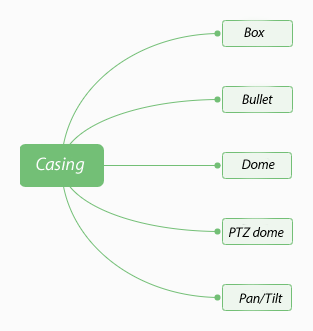
Pixel/resolution
Whether it is a network, analog, or digital camera, it can be classified according to its supported pixels and resolution. From standard-definition cameras with hundreds of thousands of pixels to 12 million high-definition cameras with 4K resolution.
The general standard definition camera, if it is analog, we will directly call it cvbs or 960H camera, not directly named after the pixel. If it is a network, it is directly called a standard definition or SD camera. 720 resolution, the megapixels or more are directly named pixels/resolution. For example, 1 million, 2 million, 3 million, 5 million, 8 million, 12 million, if named after the resolution, it is 720P, 1080P, 4K, or HD, FHD, UHD.
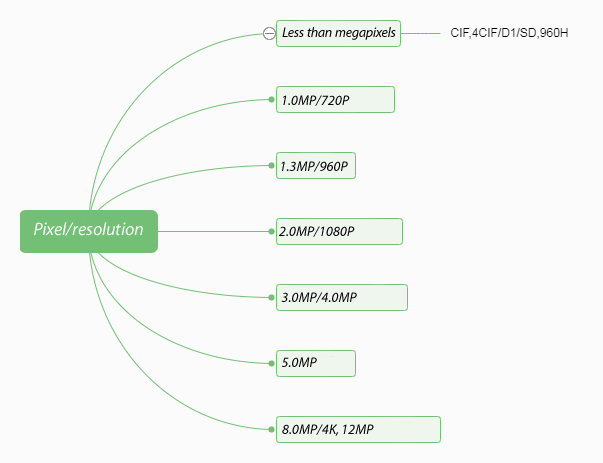
Fill light
The camera is a color image during the day, and at night in an environment where the ambient light is very weak or completely dark, it needs the help of a fill light to image. Of course, some cameras, such as starlight, can still present colorful video images as long as there is weak light.
According to whether additional lights are needed, the cameras can be divided into infrared cameras (which can be divided into 850 nanometer infrared and 940 nanometer infrared), white light supplement light/warm light cameras, and starlight full-color cameras.
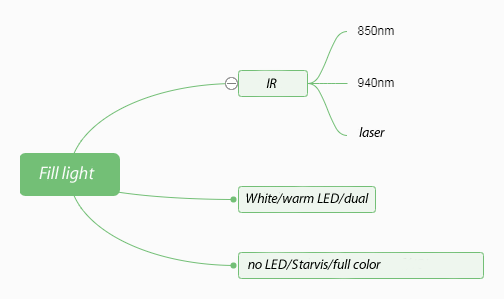
Special Purpose
In some explosion-prone occasions and environments, such as oil refineries, pipeline gas transportation, oil and gas exploration, mining, etc., as well as oceans, ships and other highly corrosive environments such as salt, acid and alkali, special applications are needed at this time. The camera made of exterior material is used for explosion-proof and anti-corrosion.
Use field
With the development of chip technology, software technology, network technology, etc., security cameras have gradually moved from the professional field to the ordinary civilian market, and more and more home WiFi cameras have entered millions of households. According to different fields of use, security cameras can be divided into professional fields and ordinary households. Ordinary home cameras mainly support WiFi distribution network, TF card or cloud storage storage, simple AI functions (such as humanoid detection, voice alarm, etc.), mobile APP management, etc.
Special scene
For different scenarios and monitoring purposes, we need to choose cameras with different functions. For example, for parking lots, you need to use license plate recognition cameras. In terms of intelligent transportation, intelligent transportation cameras with functions such as illegal capture, license plate recognition, and traffic statistics are needed. There are also industrial cameras that support machine recognition, cameras that support statistics on the number of people and faces, cameras for video conferencing, thermal imaging cameras, cameras that support wide dynamic/high light suppression, and mini/needles for special occasions (such as bank ATM machines) Hole camera, a wearable camera used for mobile law enforcement.
Video output interface
According to the different video signal output interfaces, cameras can be divided into these types.
- BNC interface. Mainly analog cameras, such as cvbs/960H, AHD/CVI/TVI/XVI, etc. SDI cameras generally also use BNC connectors to output digital signals.
- RJ45 network port. Generally it is a network camera.
- HDMI. Digital cameras, such as SDI cameras, can directly output video signals through HDMI. Before the network camera is encoded, it can also directly output digital video signals through HDMI.
- Serial port. The video signal is output through the serial port, such as RS-485, 232, TTL interface. Generally, this kind of camera is mostly used for docking with other hardware equipment, such as industrial control, electrical and water conservancy environmental monitoring equipment, law enforcement and evidence collection equipment, etc.
- USB. A camera with a USB interface is actually a serial camera, here is a separate category, it is intended to specifically refer to a camera that can be connected to a computer through a USB interface and can collect video images in the computer software. Generally can be used for video chat and video conferencing on computer software.
- Fiber port. The network camera, with an optical fiber interface, transmits video signals through the optical fiber, eliminating the need for additional configuration of optical fiber transceivers.
- Aviation connector. This camera is mainly used in vehicles. Various lines such as video and power are gathered together to form an independent interface, which is convenient to plug and unplug, stable and reliable.
Lens
According to the type of lens used, the number of lenses can classify security cameras as follows:
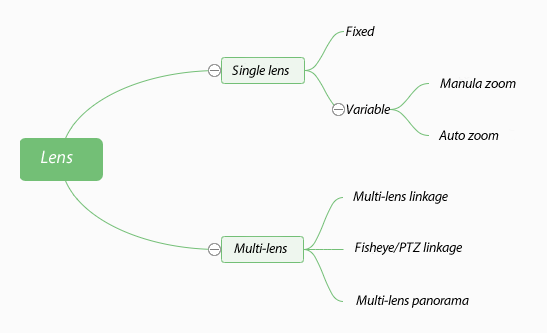
Of course, according to the aperture of the lens, it can also be divided into fixed aperture lenses, manual aperture lenses, and automatic aperture lenses. Auto iris can also be divided into DC drive iris lens, video drive iris lens, P-iris lens, i-CS lens and so on.
Signal transmission
According to the transmission method and transmission medium used, security cameras can be divided into coaxial video cable transmission, twisted pair transmission, power line transmission, optical fiber transmission, WiFi transmission, 4G transmission, etc.
It should be noted that, with the help of some conversion transmission equipment, such as a coaxial network transmitter, a coaxial video cable can be used to transmit the signal of the network camera. Similarly, with the aid of a twisted pair transmitter, a pair of 2 mountain twisted wires can also be used to transmit the signal of an analog camera. With the corresponding power line transmitter, the network camera signal or analog camera signal can be transmitted through the power line.
Powered by
Cameras use different power sources. Commonly used ones are AC24, DC12, DC5V, etc. According to the different power sources used, it can also be equipped with solar energy, accumulators, 18650 batteries, etc. to supply power to the camera.

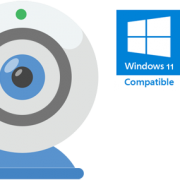
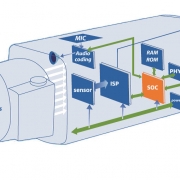

Leave a Reply
Want to join the discussion?Feel free to contribute!